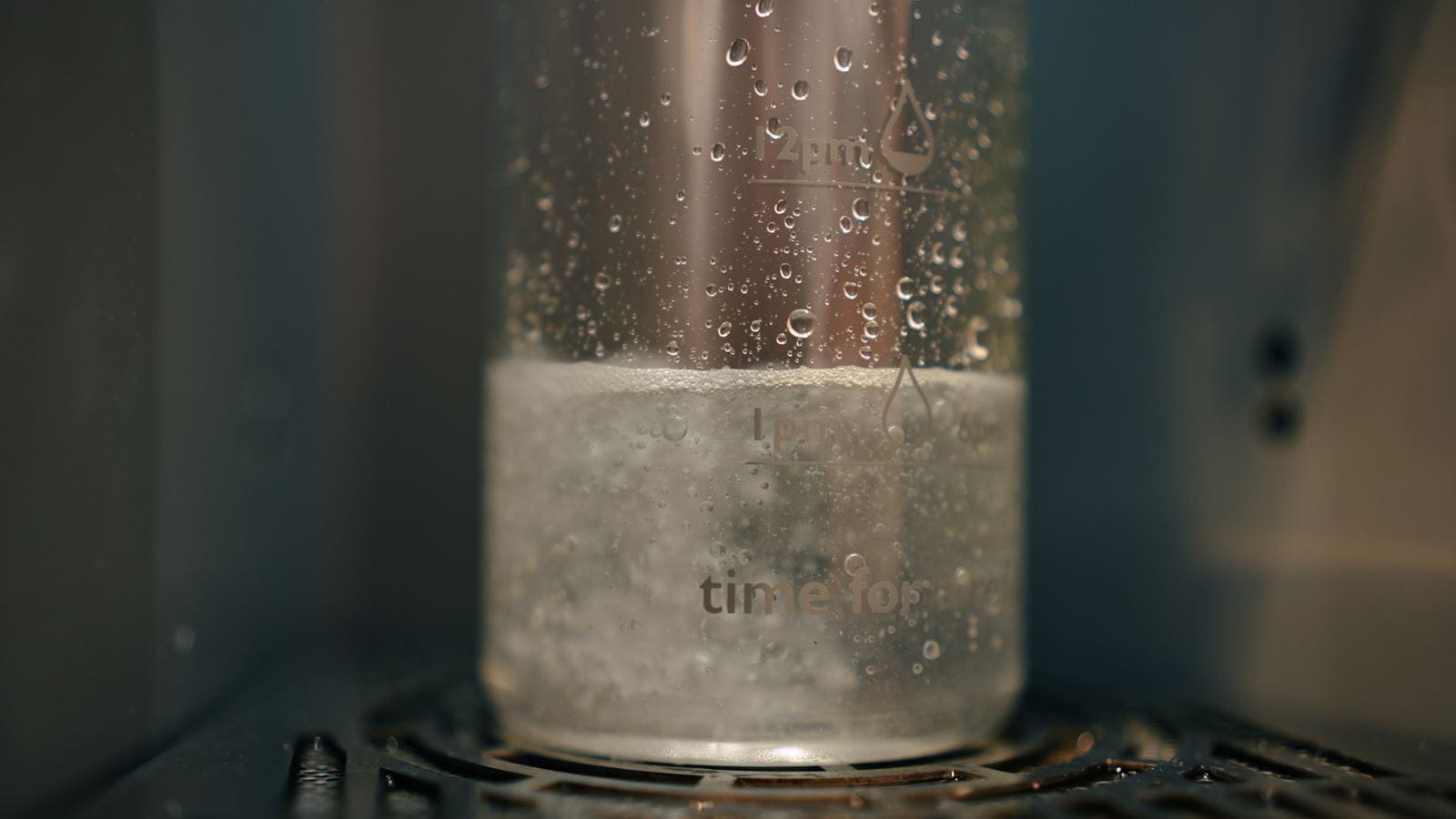What is biophilic interior design and how can you incorporate it into your home?
Home | 25-04-25

It's well known that being in touch with nature and spending time outdoors in large, open spaces can reduce stress and improve both mental and physical health. However, in our modern lives, we tend to spend most of our days indoors, either within the walls of an office or our home.
True, home and nature can coexist beautifully in some cases – we've recently offered actionable steps for creating the perfect outdoor space in your home to help you enjoy the benefits of natural light and fresh air from the comfort of your own space.
Not all homes have access to an outdoor area and, even when they do, it won't always be possible to make the most of that opportunity during winter. This is why incorporating biophilic design in architecture is becoming an increasingly popular trend.
From indoor plants to natural materials, a biophilic aesthetic seamlessly blends interior design and the natural world, making homes feel more tranquil, reducing stress, improving air quality, and much more.
But how can you effectively bring biophilic design into your home? Let’s explore the core principles of this design philosophy and practical ways to implement them.
What is biophilic design?
The term "biophilic" comes from "biophilia," a concept introduced by biologist E.O. Wilson in his 1984 book Biophilia. It describes our deep-rooted desire to connect with nature and other living beings, emphasising our affinity for environments, colours, sounds, and materials found in the natural world.
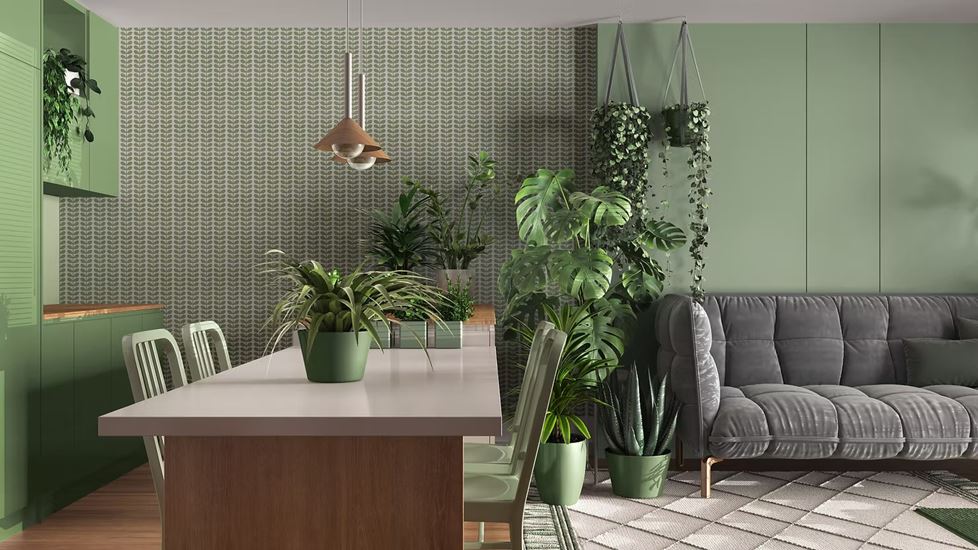
What is the theory behind biophilic design?
Biophilic design acknowledges that, as humans, we evolved over most of our history in close interaction with the natural world rather than within indoor, artificial spaces.
What are the three principles of biophilic design?
The first biophilic design principle involves bringing direct elements of nature into interior spaces – for instance, potted plants, indoor water features, and natural light. Architectural choices like courtyards, gardens, and green rooftop terraces can also be associated with this effort, as they offer immediate visual and sensory access to natural surroundings.
The second principle refers to human-made objects and design elements that replicate patterns, forms, and materials found in nature. Examples include landscape photos, nature-inspired artwork, or furniture with organic, irregular shapes. Architectural details that embrace natural elements – like woodgrain finishes, stone textures, or decorative motifs inspired by leaves and shells – also fall into this category.
What are the five senses of biophilic design?
When interior design embraces biophilia to create a refreshing atmosphere, visual natural elements are usually the first that come to mind. However, biophilic design has developed to offer a rich experience that engages all senses.
Sight
This one is almost self-explanatory. By incorporating natural elements that can be observed and appreciated with our eyes, biophilic interior design can make us feel closer to nature from the comfort of our living room.
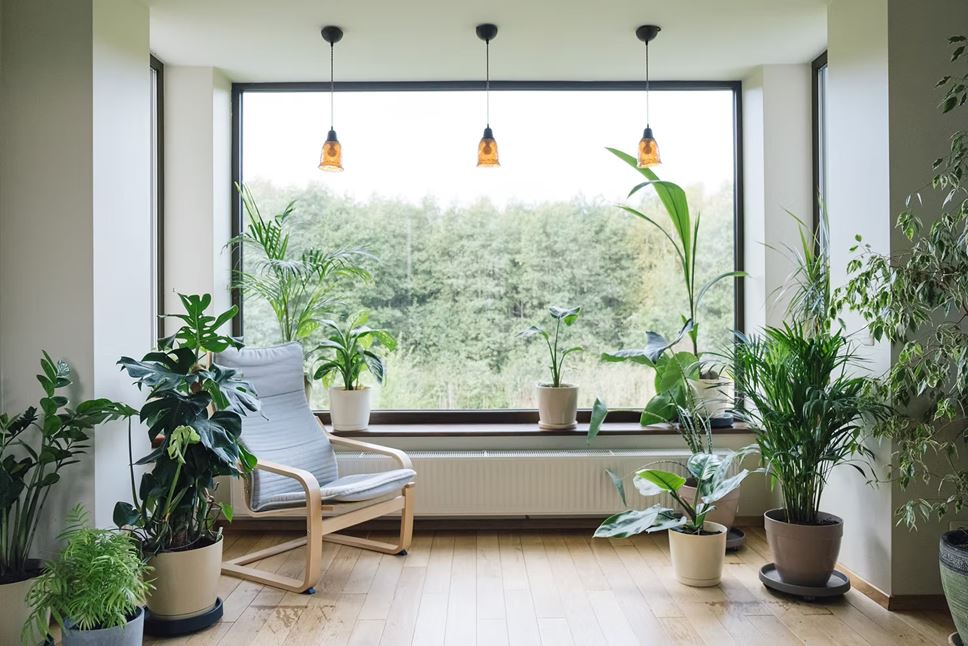
Smell
Taste
This sense is often overlooked when it comes to interior design, but biophilia creates an opportunity to add natural elements that can be enjoyed through a multisensory experience, including taste.
Touch
Tactile elements offer a plethora of possibilities when it comes to biophilic design. You can start by choosing furniture or cushions that incorporate natural fabrics such as leather, cotton, linen or even wool.
Hearing
The therapeutic effects of natural sounds make the auditory experience a vital element of biophilic interior design.
How to incorporate biophilic interior design into your home
Indoor plants
Pets, fish, or birds
A beautiful aquarium, with colorful fish and miniature marine landscapes, can instead be considered home design in a more traditional sense. Similarly, you could place a bird feeder in your garden to enjoy the chirping and birdsong that will follow – the occasional hungry squirrel might join too.
Natural light and fresh air
Even in an urban environment, your windows can be gateways to nature, giving your home precious access to natural light and fresh air. That's why large windows and skylights are so important to distribute sunlight and aerate your rooms. You can also reposition furniture to tweak light exposure to perfection, according to your needs.
Lastly, installing glass doors that open onto a garden or balcony can create a luminous connection between indoor and outdoor spaces.
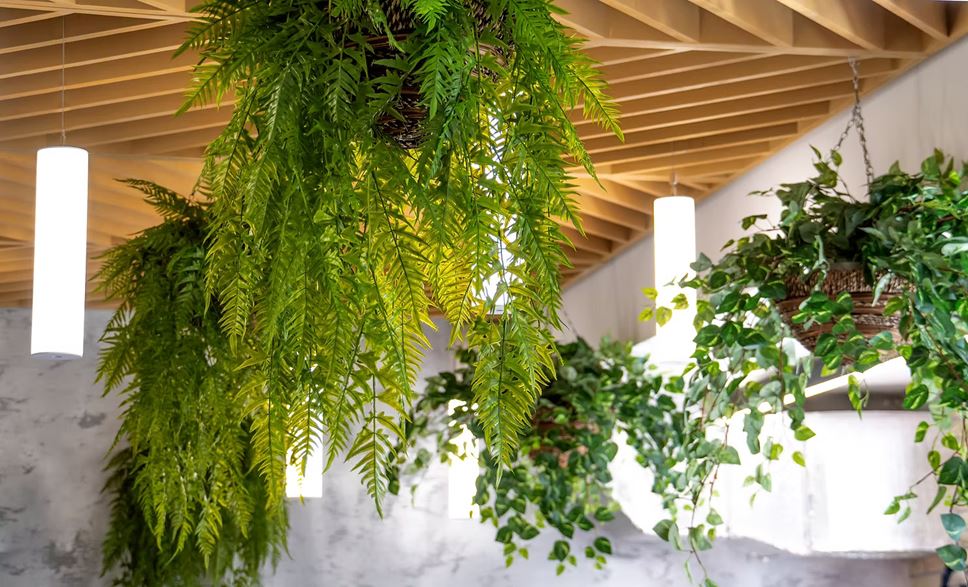
Natural materials for your home decor
We've previously mentioned how using organic materials such as wood, stone, or bamboo in your interior design creates a more calming and enjoyable atmosphere. However, in addition to its sensory appeal and positive impact on well-being, biophila supports a more sustainable design.
By incorporating natural, sustainable materials and making the most of resources like sunlight and fresh air, biophilic design helps lower our carbon footprint. Moreover, creating a stronger connection
with nature often inspires more environmentally conscious habits and decisions.
Natural shapes and patterns
Nature is full of irregular patterns, curved lines, and fractal designs. Incorporating these elements can make your home feel more organic and less rigid.
Think, for instance, of the gentle curves of ocean waves or the twisting vines of a climbing plant. To emulate these biophilic patterns, you can utilise furniture and decor with flowing, organic shapes for a calming, nature-inspired ambience.
Soothing colours
One of the easiest ways to integrate biophilic design into your home is through a colour scheme reminiscent of the natural world.
You could be inspired by a tropical beach, with its soothing combination of sandy beiges and aquamarine blues, or the changing colours of an evening sky – with its shades of pink, orange, and deep blue.
Other beautiful hues to include could be more neutral tones like cream, or those emulating the green spaces of a forest, or the dark brown of wood.
Water features
Incorporating water features into your interior design can evoke peace and relaxation. Imagine the gentle trickle of water from a tabletop fountain or the rhythmic splash of a small indoor waterfall – these design elements aren't just a joy to watch: they also create soothing, mesmerising sounds.
And if adding water features is not an option, try installing speakers to replicate the sound of flowing water and create a soothing ambience. The calming effect will be very similar.
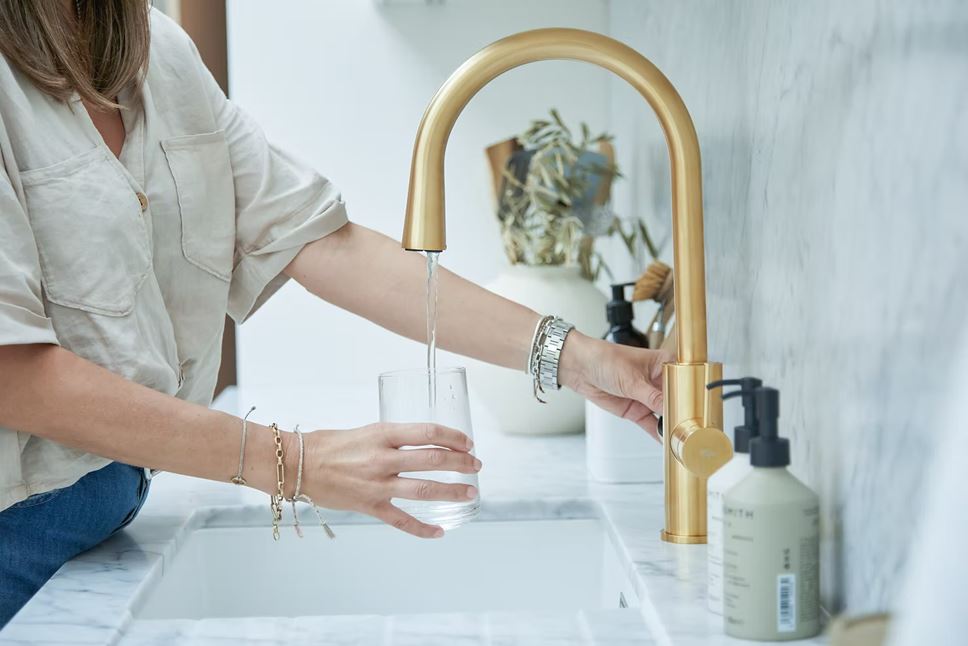
HydroTap brings you the experience of fresh mountain water
Water is synonymous with life, and in biophilic design, it's the only element that can be appreciated by all five senses. When it comes to tasting, there's no better than Zip and HydroTap; enjoy a refreshing drink that will bring back memories of refreshing mountain water from the comfort of your home.
The benefits won't be limited to the humans in your family: the health of your pets and plants could improve as well. For instance, Zip filters remove potentially harmful chemicals like chlorine and other impurities from tap water, which can be detrimental to animals or plants with delicate root systems.
Explore our extensive range to learn more about the benefits of HydroTaps and find the perfect design for your home.















